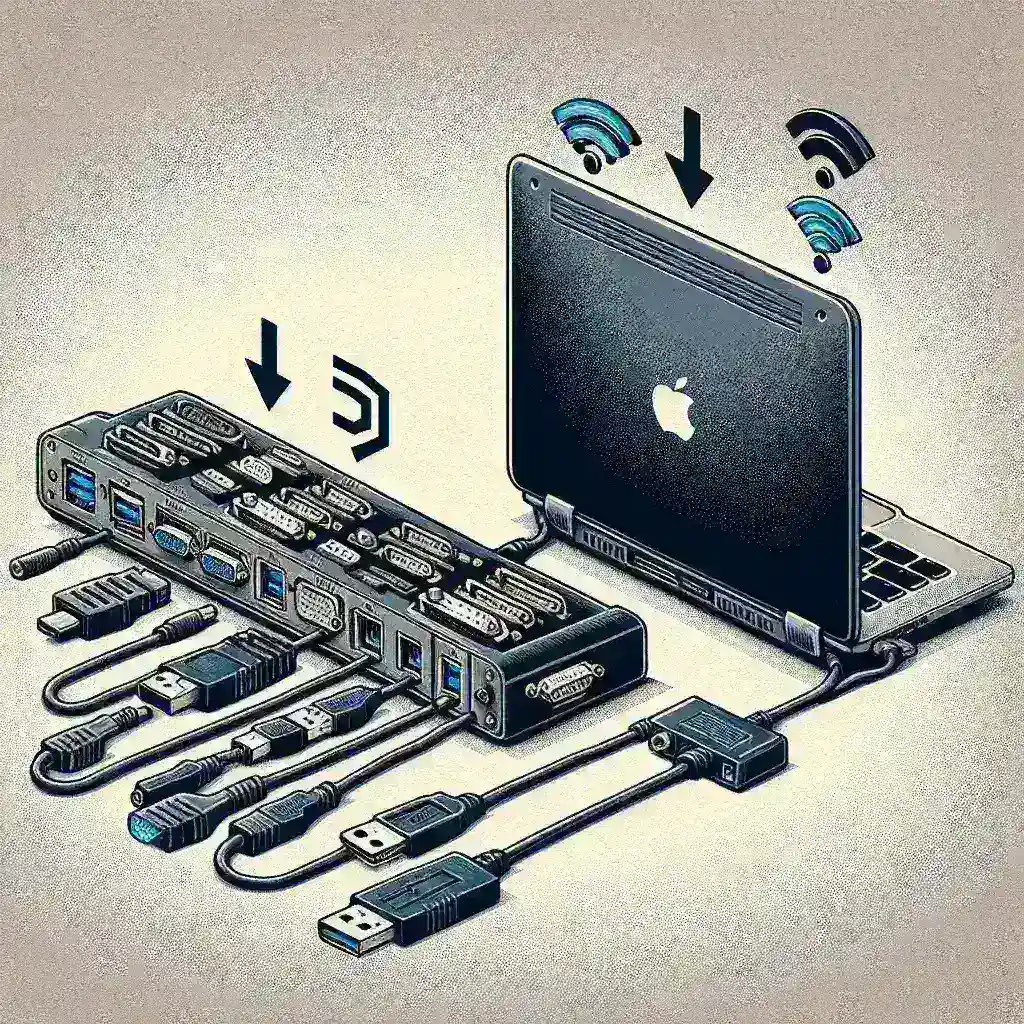The Evolution of Connectivity in Laptops
In the world of technology, progress is constant, and one of the most significant advancements has been in the way devices communicate with each other. This article delves into what drove the switch from serial and parallel connections to the more versatile USB and Wi-Fi technologies in laptops. Understanding this transformation not only highlights the evolution of technology but also sheds light on how these advancements have reshaped our daily lives.
Historical Context
To fully appreciate the transition from serial and parallel interfaces, we must first explore their origins. Serial and parallel ports were standard for connecting peripherals like printers, mice, and modems. Serial ports transmit data one bit at a time, while parallel ports can send multiple bits simultaneously, which theoretically allows for faster data transfer. However, as technology advanced, these interfaces began to show their limitations.
Limitations of Serial and Parallel Ports
- Speed: Serial and parallel connections struggled to keep up with the increasing demand for higher data transfer rates. Serial ports typically offered speeds of up to 115 kbps, while parallel ports reached around 2 Mbps. This was insufficient for modern applications, especially as multimedia content became more prevalent.
- Physical Design: The bulky connectors and cables of serial and parallel ports took up significant space. Laptops, designed for portability, required more compact and efficient solutions.
- Device Compatibility: The plethora of different parallel and serial standards led to compatibility issues between devices, complicating the user experience.
The Birth of USB
The introduction of the Universal Serial Bus (USB) in the mid-1990s marked a pivotal change in the way devices connected to computers. USB was designed to replace both serial and parallel ports, providing a single interface for various peripherals.
Advantages of USB
- Higher Data Transfer Rates: USB 1.1 offered speeds of 12 Mbps, while USB 2.0 provided up to 480 Mbps. This leap in speed made it suitable for high-bandwidth devices such as external hard drives and webcams.
- Hot Swapping: USB allowed users to connect and disconnect devices without shutting down the computer, enhancing convenience and efficiency.
- Power Supply: USB ports could supply power to connected devices, eliminating the need for separate power adapters for many peripherals.
Wi-Fi: A New Era of Wireless Connectivity
As laptops evolved, so did the need for wireless connectivity. Wi-Fi technology emerged as a game-changer, allowing devices to connect to networks without physical cables.
The Rise of Wi-Fi
Wi-Fi technology was first introduced in 1997 with the IEEE 802.11 standard. Over the years, it has undergone numerous improvements, resulting in faster speeds and greater reliability.
Advantages of Wi-Fi
- Mobility: Wi-Fi enables users to connect to the internet and local networks from anywhere within range, providing unparalleled freedom of movement.
- Scalability: Adding new devices to a wireless network is much simpler than with wired connections, allowing for easy expansion.
- Reduced Clutter: The removal of cables contributes to a cleaner and more organized workspace, aligning with the sleek designs of modern laptops.
Comparative Analysis: USB vs. Wi-Fi
While USB and Wi-Fi serve different purposes, they complement each other in the realm of connectivity. USB is primarily used for direct device connections, while Wi-Fi facilitates network access. Understanding their roles helps in identifying the right solution for specific tasks.
Performance Considerations
USB connections typically offer lower latency and faster transfer speeds compared to Wi-Fi. This makes USB preferable for tasks that require high-speed data transfer, such as file backups or video editing. Conversely, for general internet browsing and cloud applications, Wi-Fi’s convenience and mobility outweigh its slightly slower speeds.
Security Aspects
USB connections can be more secure since they require physical access to the device, reducing the risk of unauthorized access. Wi-Fi networks, however, require strong encryption protocols to safeguard against potential breaches.
Future Implications
The evolution of connectivity technologies is far from over. With the advent of USB Type-C and advancements in Wi-Fi standards, the future holds promising developments.
USB Type-C: The Universal Connector
USB Type-C is poised to become the universal connector for all devices, streamlining the types of cables and ports users need. It supports faster data transfer rates and can deliver more power, enhancing the functionality of laptops and accessories.
Wi-Fi 6 and Beyond
Wi-Fi 6, the latest standard, brings improved speeds, increased capacity, and enhanced performance in crowded environments. As smart devices proliferate, the demand for efficient wireless communication will only grow.
Conclusion
The switch from serial and parallel connections to USB and Wi-Fi has revolutionized how we interact with technology in laptops. As we continue to embrace new standards and innovations, the landscape of connectivity will evolve, driving further advancements in how we work, play, and connect with the world around us. Understanding this transition provides valuable insights into the future of technology and its impact on our lives.




